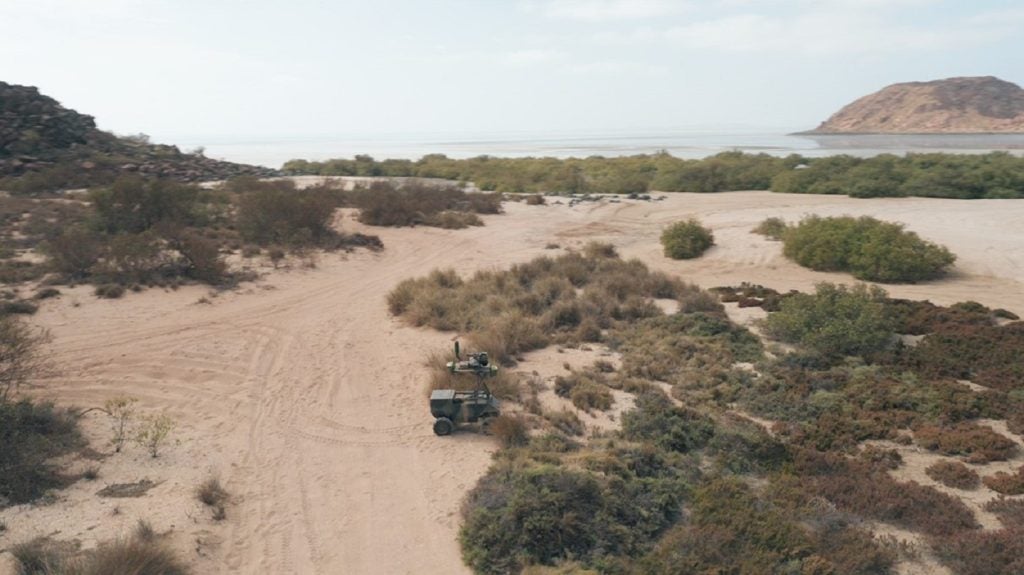Soldiers from the Australian Army’s Regional Force Surveillance Group, Pilbara Regiment, have trialled new Uncrewed Ground Vehicles (UGVs) for border protection.
Designated the ‘Ground Uncrewed System’, and referred to as GUS, this autonomous surveillance system is an Australian-developed robot.
GUS is equipped with cameras and sensors capable of providing persistent surveillance for more than 30 continuous days using battery power. An on-board liquid fuel generator recharges the battery when it is low to extend GUS’s mission endurance even further.
Furthermore, the Army’s 13th Engineer Regiment has previously trialed GUS under a variety of conditions, including deployment on Exercise Talisman Sabre in 2023.
GUS can detect moving objects and can then transmit this information to a remote operator. GUS has potential to remove soldiers from harsh environmental conditions and expand the surveillance area.
The Australian Army and industry partner Outlook Industries have worked together to develop GUS. Research and development is taking place in the Victorian town of Yinnar. The use of locally sourced materials and creation of new jobs has brought a welcome economic boost to the Gippsland community.
The global military UGV market is valued at $599m in 2024, according to GlobalData intelligence. However, it is projected to grow at a compound annual growth rate of 7.2% over the forecast period. It is expected to reach $1.2bn by 2034 and cumulatively value $9.5bn over the forecast period.
Notably, the market is expected to be dominated by the Combat UGVs segment, which accounts for 41.% of the market, followed by the Intelligence, Surveillance and Reconnaissance (ISR) UGVs segment with a 22.8% share – GUS would come under the latter segment.
This combat segment seems to be surpassing the ISR segment for the first time, as the ISR capability had been a primary purpose of drone warfare in the past.
Uncrewed Aerial Vehicles (UAVs) employed during the early stages of the Global War on Terror, such as the MQ-1 Predator and RQ-11B Raven, were almost exclusively tasked with conducting ISR operations to inform the activities of conventional forces, with the Predator fulfilling a more limited precision strike role on certain occasions.
Over the last two decades, however, research and development in the field of drones has experienced a creativity and investment boom, with numerous manufacturers designing and marketing uncrewed vehicles of all kinds tailored to an increasingly diverse range of operations including air-to-air combat, aerial refuelling, explosive ordnance disposal, search and rescue, precision strike, suppression of enemy air defences, electronic warfare, battlespace networking, and ISR to name a few.









